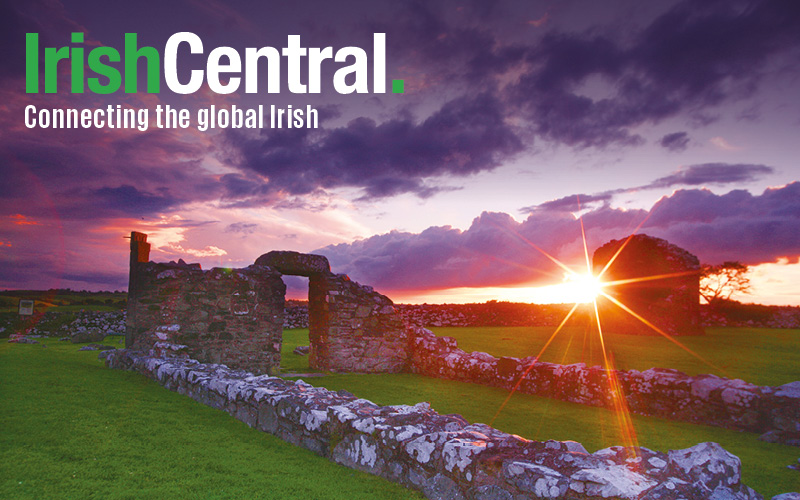During the course of the Great Irish Famine, 1845-1851, more than a million people emigrated from Ireland never to return.
On the Strokestown estate of the Mahon family, more than 5,000 people left. Some, like the 1,432 who went to Canada, in the summer of 1847 were assisted in emigration by the landlord, Major Denis Mahon. Most, however, received small sums of money to go and sailed for England, Canada, America and Australia.
As preparations continue for the 2013 Gathering, when Ireland will take center stage in the minds of millions of people claiming Irish descent around the world, at Strokestown Park House an exciting project is underway as part of those celebrations. In 2013, Strokestown Park, in collaboration with the Department of History, NUI Maynooth and the OPW/NUI Maynooth Archive & Research Centre at Castletown, will welcome the Strokestown Famine Diaspora back to county Roscommon for a week-long celebration which will include an international famine conference, music, drama and other community based activities.
As part of The Gathering, Strokestown Park House, in collaboration with the Department of History, NUI Maynooth is looking to trace and invite ‘home’ to Roscommon the ancestors of these Famine emigrants for a week of celebration and remembrance.
Owing to current economic circumstances it might not be possible for many of the global Irish who wish to take part in some of the events in Ireland from doing so. We want to gather the Roscommon Famine emigrants stories. We want to hear your story- whether detailed or not, or if you are only in the process of finding out about your Famine ancestors. While the project is primarily aimed at Strokestown emigrants, we would love to hear from those with roots in Roscommon and further afield.
The stories will be added to our website and will be available to be read by visitors to the National Famine Museum. Send us your stories, pictures, memories and any other information that will help put all these pieces of the jigsaw together (see email below).
Family names
In total the Strokestown Park Archive (a fascinating collection of over 40,000 documents) contains details on over 10,000 people during the Great Famine, through emigration, eviction, relief and workhouse records. A sampling of the family names of those who emigrated during the Great Famine include:
Brennan, Feeney, Murray, McGuire, Hogan, Fitzsimons, Gannon, Freeman, Conry, Casserly, Doherty, Burke, Murtagh, Moran, Duffy, Fahey, Kelly, Goodman, Bowens, Doyle , Kenny, Moore, Beirne, Gibbons, Healy, Finnegan, Quinn, Egan, Fallon, Hanly, Tighe, Donnelly, Hunt, Cox, Dempsey, Donegan, Dwyer, McCormick, Glancy, Madden, Lannon, Rush, Duffy, McLaughlin, Conneally, Higgins, and Flannigan.
Taking a sample of those that left it may be possible the trace the lives of those that reached Canada, America, Australia, and other locations.
For example Catherine Blair of Lissonuffy, near Strokestown arrived in Baltimore, MD in 1850. She is recorded in the Federal Census in 1850 as living there with her husband James, aged 57 and three children William aged 11, Thomas aged 9 and Jane aged 2. Others settled in the ‘Kerry Patch’ in St Louis, Missouri and in Cincinnati Ohio.
Many however failed to adapt to their new life. Ellen Shannon for instance was listed as being a patient in county asylum in 1870. She was buried at Rockspring, St Louis in 1882.
What became of James Spellman who arrived in New York in 1846? Was he the same person that is listed in the 1860 census as living in Newport, Herkimer, New York with his wife Teresa 30 years, and three daughters Mary (6), Martha (4) and Catherine, by which time he had amassed property valued at $3,377 dollars and personal estate worth $1,500.
Others remain a mystery and do not appear on US Census material. Take for instance the case of Frank Coggins and his whereabouts in America after the Famine. In September 1852 the Freemans Journal newspaper reported that a man named Frank Coggins, his wife, son and three daughters entered the workhouse in Strokestown in March 1850 as ‘miserable and emaciated looking creatures’. Within a short space of time the son, then aged 15 and his father absconded from the workhouse went to England leaving the rest of the family behind. From there they then went to America, and after about nine months or so secured passage for their family and duly sent passage tickets to the master of the workhouse. It is a fascinating account of the hardships which many endured and strength and resilience which they showed. Can any more be found out about Frank Coggins, his family or subsequent generations?
You can email with queries or information to info@strokestownpark.ie or visit the website.
*Dr Ciarán Reilly is a Postdoctoral Research Fellow at the Department of History, NUI Maynooth carrying out research on the Strokestown Park House Archive.




Comments